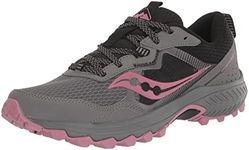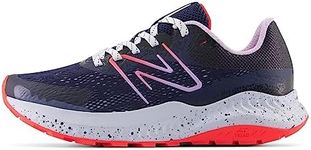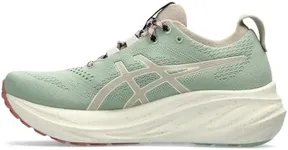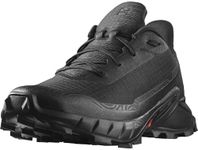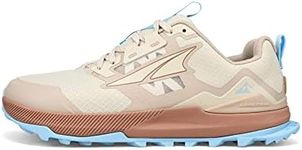Buying Guide for the Best Womens Trail Shoes
Choosing the right women's trail shoes is all about matching your footwear to the type of trails you plan to explore and your personal comfort needs. Trail shoes are designed to provide grip, protection, and support on uneven and sometimes slippery terrain. Before you buy, think about the kinds of trails you'll be on—are they rocky, muddy, or mostly flat? Also, consider how much cushioning and support you prefer, and whether you need extra protection from the elements. Trying on different shoes and walking around in them can help you find the best fit for your feet and your adventures.Traction (Outsole Grip)Traction refers to how well the shoe grips the ground, which is crucial for safety and stability on trails. Trail shoes have different tread patterns and rubber compounds to handle various surfaces. Shoes with deep, aggressive lugs are best for muddy or loose terrain, while shallower, closely spaced lugs work well on hard-packed or rocky trails. If you mostly hike on soft, slippery ground, go for shoes with bigger, spaced-out lugs. For dry, rocky paths, a flatter, stickier sole might be better. Think about the trails you frequent most and choose a grip pattern that matches those conditions.
CushioningCushioning is the amount of padding between your foot and the ground, affecting comfort and shock absorption. Trail shoes range from minimal cushioning for a close-to-ground feel to maximum cushioning for extra comfort on long hikes. Minimal cushioning is lighter and gives you more ground feel, which some people prefer for short or technical trails. Moderate cushioning offers a balance of comfort and responsiveness, suitable for most users. Maximum cushioning is best for long distances or if you want extra protection from rocks and roots. Consider how much comfort you need and how long you'll be on your feet when choosing the right level.
Fit and SupportFit and support refer to how the shoe holds your foot in place and supports your arches and ankles. A good fit prevents blisters and slipping, while proper support helps avoid fatigue and injury. Some shoes are designed for narrow feet, others for wider feet, and some offer more arch support or a snug heel. If you have high arches or flat feet, look for shoes that match your foot shape. Try on shoes at the end of the day when your feet are slightly swollen, and make sure there's enough room in the toe box for your toes to move comfortably.
ProtectionProtection in trail shoes comes from features like reinforced toe caps, rock plates, and durable uppers. These elements shield your feet from sharp rocks, roots, and debris. If you often hike on rugged, rocky trails, look for shoes with sturdy toe guards and underfoot protection. For smoother trails, you might not need as much reinforcement, which can make the shoe lighter and more flexible. Think about the hazards you encounter most often and choose a shoe that offers the right level of protection for your needs.
Water Resistance and BreathabilityWater resistance keeps your feet dry in wet conditions, while breathability allows sweat and heat to escape. Some trail shoes have waterproof membranes, which are great for rainy or muddy trails but can be less breathable. Others use mesh uppers for better airflow, which is ideal for hot, dry conditions but won't keep water out. If you hike in wet or unpredictable weather, consider waterproof shoes. For dry, warm climates, prioritize breathability to keep your feet cool and comfortable.
WeightWeight refers to how heavy the shoes feel on your feet, which can affect your energy and agility on the trail. Lighter shoes are easier to move in and are often preferred for faster hikes or running, but they may offer less protection and support. Heavier shoes usually provide more durability and stability, which is helpful on rough or technical terrain. Think about how much weight you’re comfortable carrying and the type of trails you’ll be on when deciding between lighter or heavier shoes.

